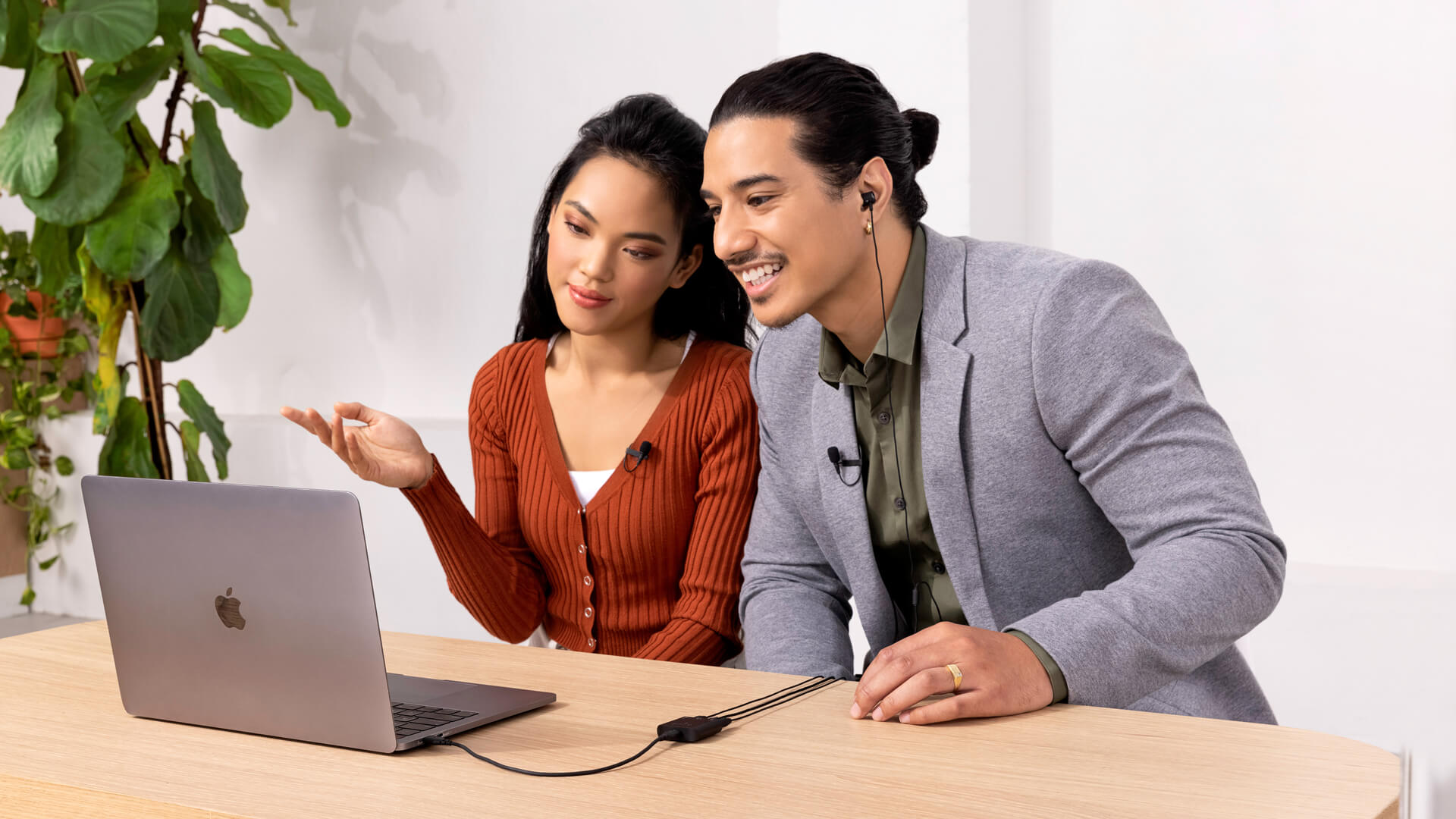Another excellent option is the Wireless GO II or Wireless ME. These are both dual-channel wireless systems consisting of a receiver – which plugs directly into any smartphone with a USB-C or Lightning port via its USB output – and a transmitter (or pair of transmitters, in the case of Wireless GO II), which send audio wirelessly to the receiver. These are a great solution if you need a little more distance between you and the camera when recording. The Wireless GO II gives you a built-in display and more hands-on control of your audio, as well as a pair of transmitters, while the Wireless ME is a more streamlined, easy-to-use solution for quickly capturing professional wireless audio.
Connecting a 3.5mm Microphone to a USB-C or Lightning Smartphone
-
The AI-Micro is perfect for connecting 3.5mm microphones to a smartphone
-
The SC4 adaptor converts 3.5mm cables from TRS to TRRS for use with smartphones
If you have a microphone with a 3.5mm connector – such as a RØDE VideoMicro II or Lavalier II – and want to connect it to your smartphone, you'll need an audio interface like the AI-Micro.
This handy little device is super easy to use and is compatible with almost any mobile device via its universal USB output. It features two inputs for connecting two microphones (more on this shortly) and a headphone output for monitoring your audio. It is also compatible with our apps, RØDE Capture, RØDE Reporter and RØDE Central, which give you full control over your microphones and more.
You can also use an adaptor such as the RØDE SC4 in conjunction with the 3.5mm to USB-C/Lightning adaptor that came with your phone to connect your 3.5mm mic. However, you will not be able to monitor your audio with headphones or control the level of your mic like you can with the AI-Micro.
Monitoring Your Audio
-
It’s critical to monitor your audio levels with headphones like the NTH-100
A crucial factor to consider is the importance of monitoring your audio while recording. The last thing you want is to do is make a lengthy video or podcast, only to realise afterward that your levels were too high or too low, or that your microphone wasn't recording at all.
"Monitoring" your microphone's audio - i.e. listening to it in real-time through headphones – allows you to make adjustments before recording if required.
Seeing as you are using your phone's headphone port (the USB-C or Lightning port) to connect your microphone, there is nowhere to plug your headphones into, unless your microphone has a headphone output. Thankfully, all of the RØDE devices mentioned above do!
It's highly recommended that you have a pair of headphones like the NTH-100 handy when recording.
Connecting Two Microphones to a Smartphone
-
The AI-Micro is a 2-channel audio interface purpose-built for smartphones
The simple notion of recording with more than one microphone to a smartphone has been historically fraught with complex connectivity issues and the need for multiple adaptors, cables and splitters to even get started. The AI-Micro makes this incredibly simple.
With its dual microphone inputs, universal USB output for connecting to smartphones with either USB-C or Lightning ports, and a headphone output for audio monitoring, it's the easiest way to record great-sounding two-person podcasts, interviews and video calls anywhere you like.




